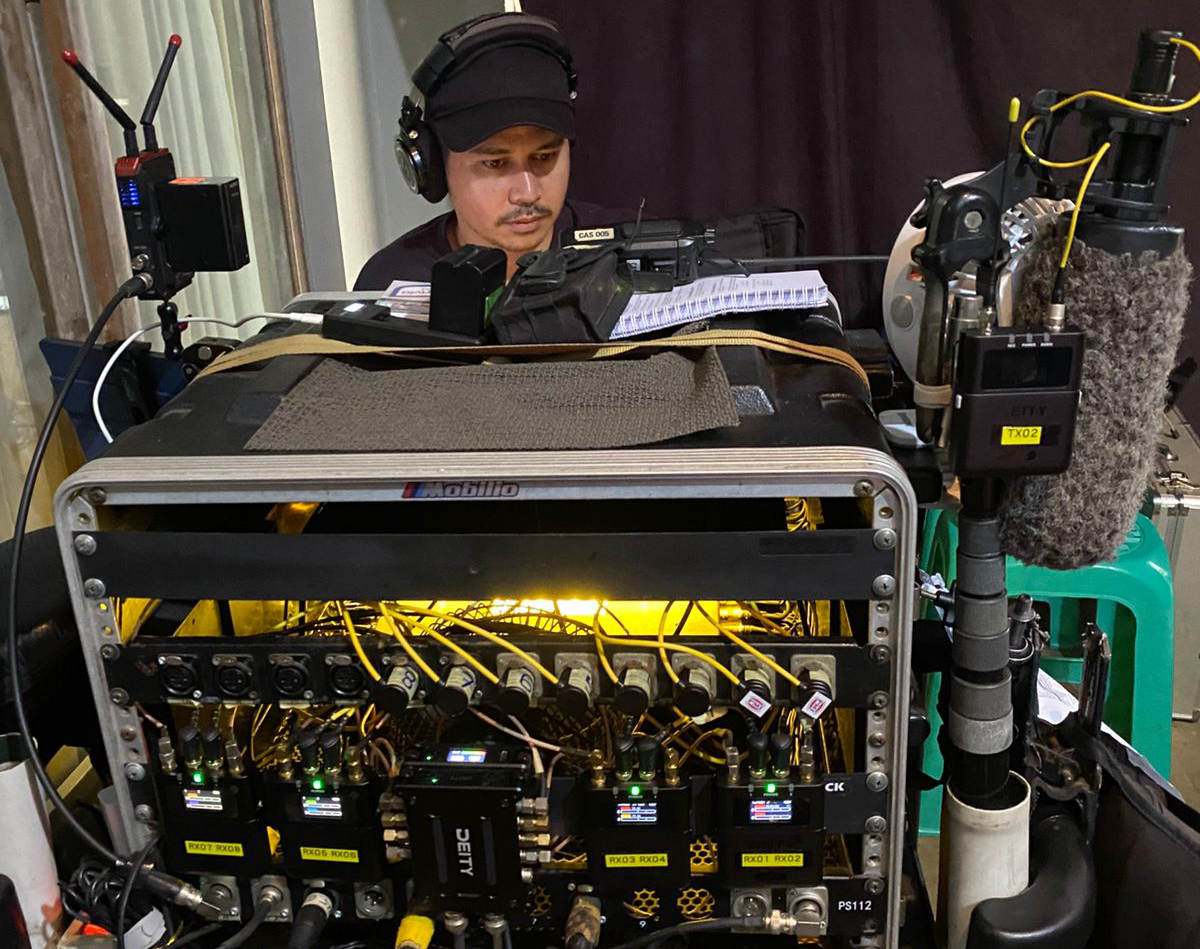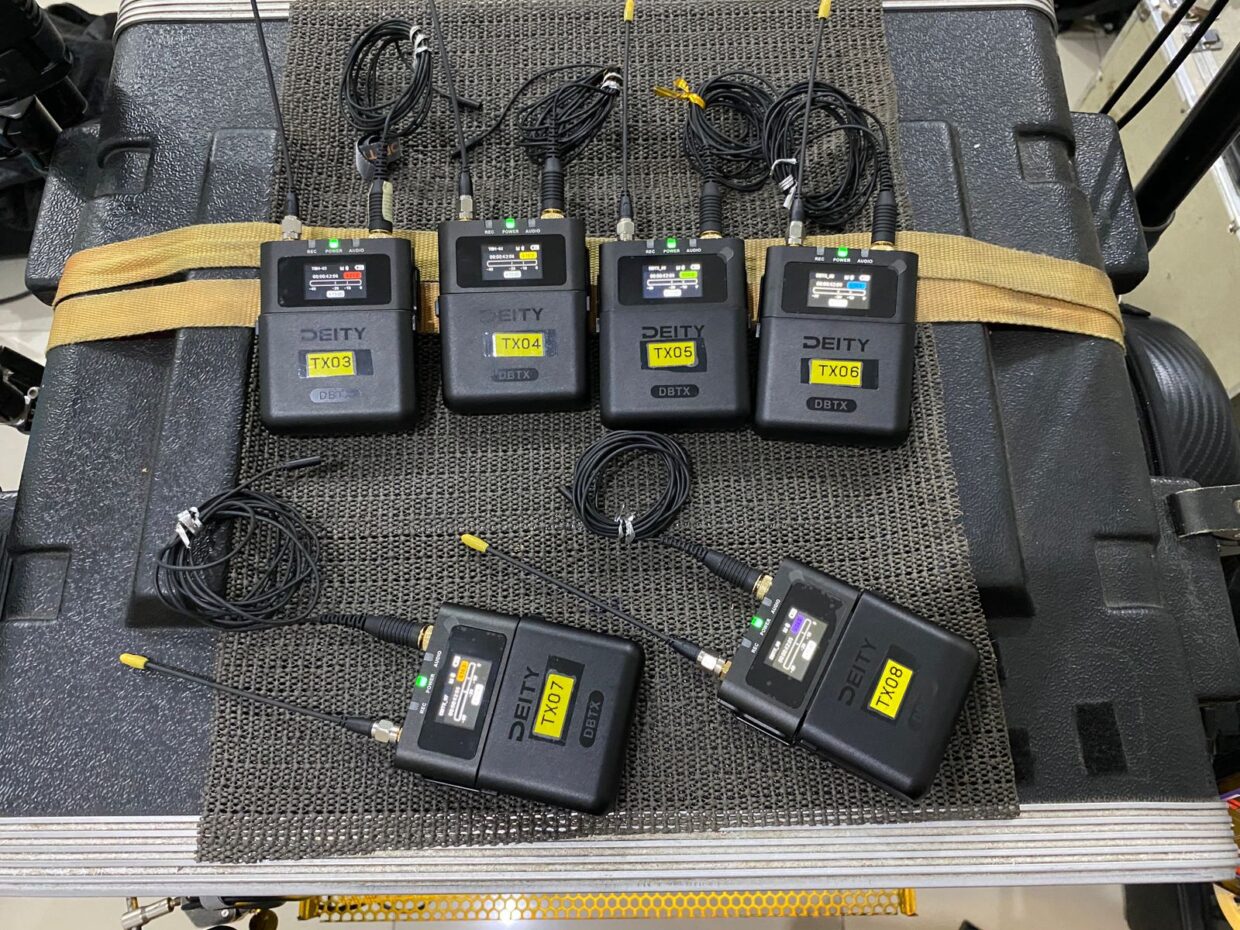The humid Indonesian air hung thick around the film set as award-winning director Joko Anwar called for quiet on set. In the cramped bathroom location, the lead actor prepared to deliver what would become one of the film’s most emotionally charged scenes. For location sound mixer Anhar Moha, this moment represented everything challenging about capturing audio in demanding conditions—and everything that makes the right equipment essential.
Deity Microphones are extremely proud to have played a key role in Anwar’s latest project, where Moha chose multiple Deity products to help capture excellent audio, maintain dependable signal quality, and ultimately save on post-production costs.

The main audio challenge facing the production was something many sound recordists know intimately: capturing the full dynamic range within scenes that shift from intense shouting to subtle whispering. “With the Deity W.Lav Pro, I was very satisfied,” Moha explains. “It captured everything clearly without peaking.” This reliability proved crucial as the film demanded emotional authenticity that could only come from capturing performances live on set.
Weather became another formidable opponent. Indonesia’s tropical climate doesn’t pause for film productions, and the crew found themselves working through sudden downpours that would challenge any equipment. The Deity S-Mic 3 and 3S proved their worth during these demanding conditions. “They were incredibly helpful, especially during rainy weather conditions,” Moha recalls. That bathroom scene—the one where humidity could have destroyed audio quality—became a testament to the microphones’ resilience. “The S-Mic 3S captured every nuance of the performance despite the humidity. It was used in the final cut without needing ADR.”
For any sound recordist, those last four words represent the holy grail: no ADR needed. The signal remained remarkably stable throughout production, while the internal recording feature provided crucial backup capabilities. “The signal performance clearly exceeded my expectations,” says Moha. “With stable signal, internal recording, and built-in timecode, this is the all-in-one package every sound recordist needs.”

The built-in timecode feature of the Deity THEOS system transformed post-production workflow in ways that extended far beyond mere convenience. Syncing became not just easier and faster, but more reliable—a change that rippled through the entire production pipeline. The financial impact was immediate and substantial. Moha estimates savings of about 15–20% in post-production audio costs, while fewer reshoots meant the project wrapped three days earlier than planned, saving thousands in crew and location expenses.
Beyond the technical advantages, something more intangible but equally valuable emerged: improved collaboration. “Having dependable audio reduced friction between sound and camera teams,” Moha notes. “Because of synced timecode and predictable mic behavior, there was less back-and-forth, and overall communication improved.” When equipment performs consistently, creative teams can focus on creativity rather than troubleshooting.

The satisfaction runs deep enough that Moha and his team have already recommended Deity to two other productions, integrating the system as a core part of their sound kit. But perhaps more telling is his experience with the company’s support structure. “Deity’s customer support has been top-notch,” he adds. “When we had questions about firmware updates, their response was fast and detailed. The transition from our old system was smoother than expected.”
For Anwar’s latest film, what began as an equipment choice became a production advantage—one measured not just in audio quality, but in time saved, costs reduced, and creative energy preserved for what matters most: telling the story.